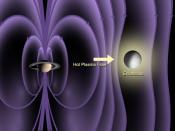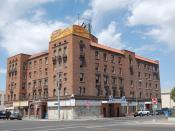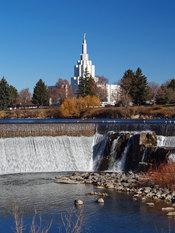Before I was able to determine if Dihydrogen Monoxide (DHMO) should be banned from use or not, I had to find out what exactly DHMO was. Dihydrogen Monoxide, also known as Dihydrogen Oxide, Hydrogen Hydroxide, Hydronium Hydroxide, or simply Hydric acid, is a colorless, odorless and tasteless chemical compound. It has a boiling point of 10úC (212úF) and a melting point of 0úC (32úF).
Some of the dangers associated with Dihydrogen Monoxide are severe tissue damage due to prolonged exposure to its solid form, can cause severe burns in gaseous form, and if accidental inhaled leads to death. DHMO is found in biopsies of pre-cancerous tumors and lesions. Sign of ingestion include extreme sweating, urination or vomiting, and for those who have developed a reliance on DHMO, total withdrawal means certain death. It's a major component in acid rain, the "greenhouse effect", killer cyclones, and El Nino. Dihydrogen Monoxide also contributes to soil erosion, decreases the effectiveness of automobile brakes and leads to corrosion and oxidation of many metals.
Dihydrogen Monoxide has been implicated in the deaths of thousands of Americans every year.
With all the dangers associated with Dihydrogen Monoxide what could possible be the government's reasoning for the use of this chemical compound. DHMO is used as a spray-on fire suppressant and retardant, an industrial solvent and coolant, and is used in nuclear power plants. DHMO is used in the production of Styrofoam, used in abortion clinics, and is part of animal research.
Dihydrogen Monoxide has been detected in every major lake and river in the United States, and the EPA nor any other government agencies has taken any action toward this invisible killer. The American government has refused to ban the production, distribution, or use of this harmful chemical due to its "importance to the...



Lol
nice work! this topic is a good joke! :)
0 out of 0 people found this comment useful.